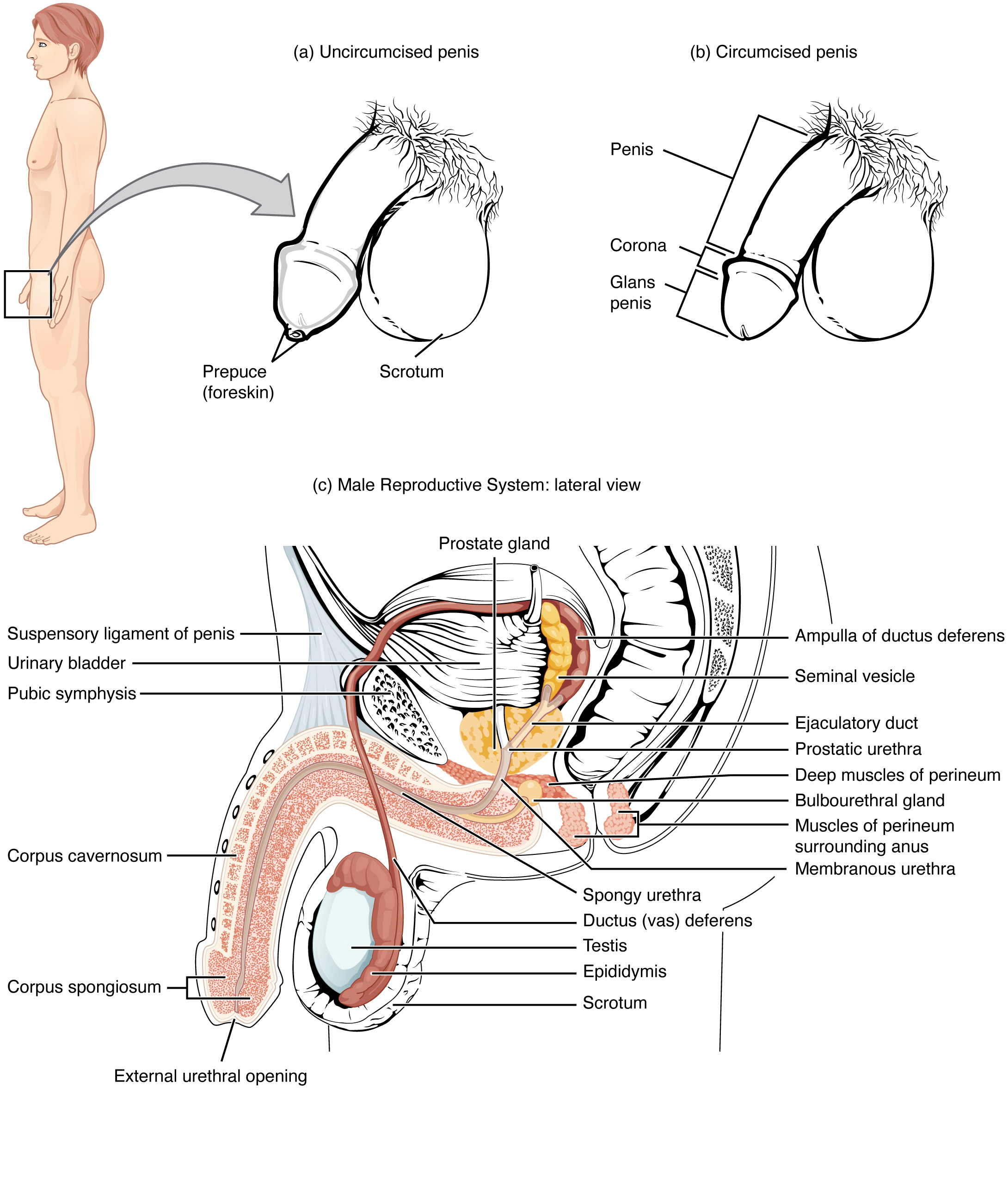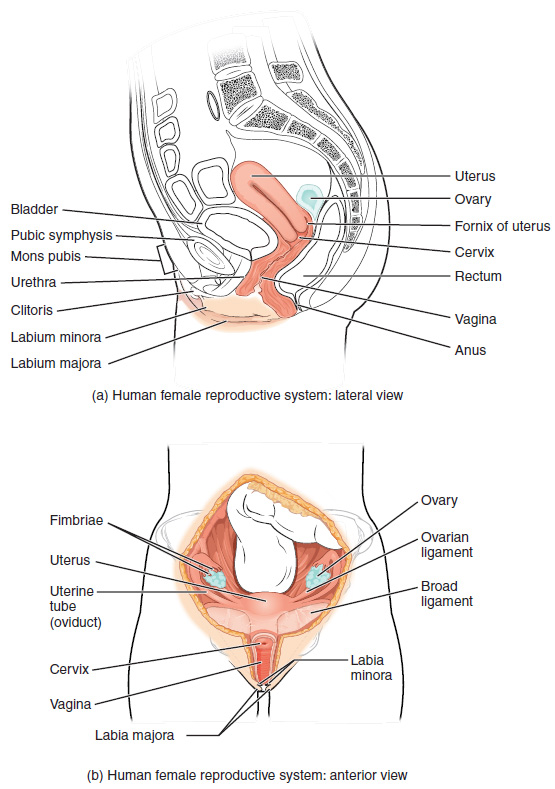Science Study Guide for the TEAS
Page 4
Human Anatomy and Physiology: The Reproductive, Integumentary, and Endocrine Systems
Anatomy and Physiology of the Reproductive System
The reproductive system enables the formation of new individuals. A developing embryo responds to the presence of either testosterone to develop the male reproductive organs or estrogen to develop the female reproductive organs. It’s not until puberty, however, that the organs become functional and capable of reproduction.
Male
The role of the male reproductive system is to produce and deliver sperm. During puberty, the testes respond to the release of FSH (follicle-stimulating hormone) and LH (luteinizing hormone) to begin the production of active sperm.
Structure
The male reproductive system is composed of the testes, glands, sperm ducts, urethra, and penis. The testes are contained within the scrotum and produce sperm (male sex cells) and male sex hormones. The primary male sex hormone is testosterone.

Retrieved from: https://openstax.org/books/anatomy-and-physiology/pages/27-1-anatomy-and-physiology-of-the-male-reproductive-system
Function
Testosterone is secreted in males after puberty, stimulating the production of sperm, increasing body hair growth, causing enlargement of the larynx and thickening of the vocal cords, increasing muscle mass, and thickening the skin and bones.
Female
The function of the female reproductive system is to create ova, or egg cells, and to prepare to nourish a developing embryo. The ovaries are responsible for the production of egg cells. During puberty, the ovaries respond to FSH and LH to begin releasing egg cells on a monthly basis.
Structure
The female reproductive system is composed of the ovaries, fallopian tubes, uterus, cervix, and vagina and includes a 28-day cycle of events known as the menstrual cycle. The ovaries contain hundreds of eggs or ova (female sex cells).

Retrieved from: https://openstax.org/books/anatomy-and-physiology/pages/27-2-anatomy-and-physiology-of-the-female-reproductive-system
Function
The ovaries release hormones that cause the lining of the uterus to develop and cause an egg to mature. The main female sex hormones are estrogen, progesterone, luteinizing hormone (LH), and follicle-stimulating hormone (FSH). These hormones regulate the menstrual cycle; estrogen, in particular, stimulates the changes that occur during puberty.
The Endocrine System’s Role
The endocrine system creates hormones in various glands throughout the body, which are delivered by the circulatory system. The pituitary gland is found in the brain and controls the release of FSH, LH, and oxytocin, which is important during and after childbirth. The ovaries produce estrogen and progesterone. The testes produce testosterone. Many disorders of the reproductive system are caused by imbalances in one or more of these hormones.
Anatomy and Physiology of the Integumentary System
The integumentary system includes the body’s largest organ, the skin, as well as other structures that help protect the body’s internal environment. The skin is the boundary that separates the body from the outside world. When the skin is punctured or damaged, infection may occur.
Structure
The integumentary system is composed of the skin, hair, and nails. Human skin has several layers, including the epidermis, dermis, and hypodermis. The epidermis is the external layer; the dermis is the middle layer and contains the muscular tissue, follicles and hair roots, nerve endings, vessels, glands, and connective tissue. The innermost layer is the hypodermis, which contains the body fat.
Function
The integumentary system acts as a barrier and protects the body from damage. It also excretes waste substances, such as sweat, and helps to regulate body temperature and vitamin D synthesis. Sensory receptors for the detection of pain, pressure, and temperature are attached to the integumentary system.
Role in Homeostasis
The integumentary system is vital for the human body to maintain balanced internal conditions (homeostasis). It regulates body temperature by either narrowing the blood vessels in the dermis to prevent heat loss or widening them to increase heat loss. Sweat glands also help cool the body as sweat evaporates.
Anatomy and Physiology of the Endocrine System
Unlike many other body systems, the parts of the endocrine system are not joined together as a single unit. Instead, it consists of several glands in various parts of the body that secrete hormones and must rely on the bloodstream to deliver these hormones to tissues in the body. These hormones affect the activities of target cells to perform various functions.
Structure
The endocrine system of the body is made up of glands that secrete hormones into the bloodstream.The brain contains the hypothalamus, pineal gland, and the pituitary. In the throat are the thymus, thyroid, and parathyroid glands. The pancreas is inferior to the stomach and aids in digestion. The adrenal glands are superior to the kidneys and control stress responses. The reproductive glands include the ovaries and testes.

Retrieved from: https://openstax.org/books/anatomy-and-physiology/pages/17-1-an-overview-of-the-endocrine-system
Function
The hormones travel through the circulatory system to work on particular target organs in the body. Hormones help regulate many different bodily functions, including growth and development, reproduction, metabolism, and stress responses. Glands of the endocrine system include the adrenal gland, which produces adrenaline, noradrenaline, and dopamine.
Role in Homeostasis
The endocrine system is very important in maintaining homeostasis. Hormones are released in response to the body’s internal conditions as well as its external environment. For example, an increase in blood sugar after a meal would cause the pancreas to release more insulin, aiding glucose uptake in cells. Another example would be if a person is startled by a bear, the adrenal glands will release adrenaline, which controls the “fight or flight” response.
Positive and Negative Feedback Mechanisms
Hormones have a role in controlling the body, but they must also be regulated. Most are controlled by negative feedback mechanisms, in which one part of the body senses an imbalance and stimulates a gland to create a hormone until a balance is restored. Once the balance is restored, the stimulation of the gland ceases. A positive feedback loop can occur during certain events, such as childbirth, that need a steady increase in activity to achieve a result.
Relationship with the Central Nervous System
The nervous system and endocrine system both send messages throughout the body, though in different ways. The nervous system senses changes in the environment (e.g., temperature, pain, danger), and the endocrine system responds by releasing hormones to regulate the necessary processes.
All Study Guides for the TEAS are now available as downloadable PDFs